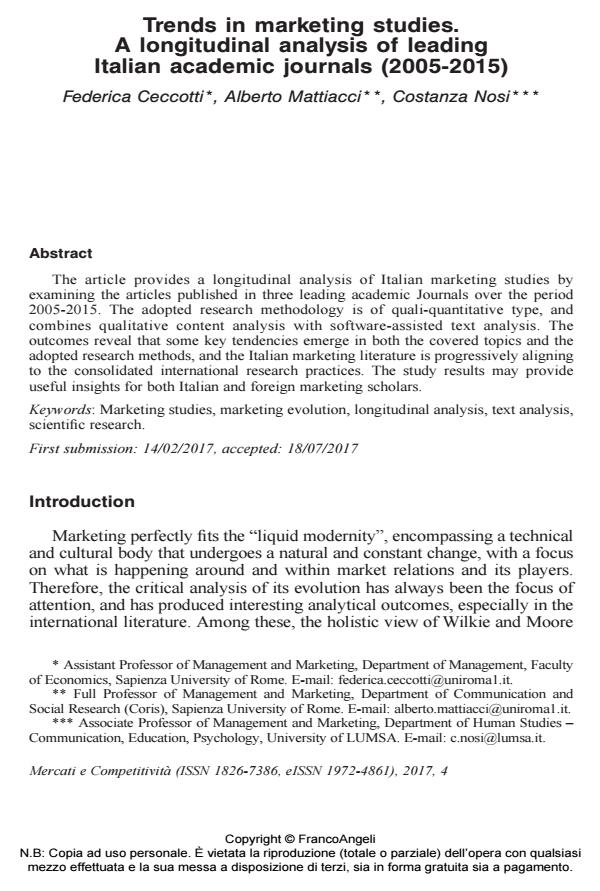Trends in marketing studies. A longitudinal analysis of leading Italian academic journals (2005-2015)
Journal title MERCATI & COMPETITIVITÀ
Author/s Federica Ceccotti, Alberto Mattiacci, Costanza Nosi
Publishing Year 2017 Issue 2017/4
Language English Pages 26 P. 77-102 File size 173 KB
DOI 10.3280/MC2017-004005
DOI is like a bar code for intellectual property: to have more infomation
click here
Below, you can see the article first page
If you want to buy this article in PDF format, you can do it, following the instructions to buy download credits

FrancoAngeli is member of Publishers International Linking Association, Inc (PILA), a not-for-profit association which run the CrossRef service enabling links to and from online scholarly content.
The article provides a longitudinal analysis of Italian marketing studies by examining the articles published in three leading academic Journals over the period 2005-2015. The adopted research methodology is of quali-quantitative type, and combines qualitative content analysis with software-assisted text analysis. The outcomes reveal that some key tendencies emerge in both the covered topics and the adopted research methods, and the Italian marketing literature is progressively aligning to the consolidated international research practices. The study results may provide useful insights for both Italian and foreign marketing scholars.
Keywords: Marketing studies, marketing evolution, longitudinal analysis, text analysis, scientific research.
- The Italian contribution to the marketing literature Marco Galvagno, in Italian Journal of Marketing /2022 pp.1
DOI: 10.1007/s43039-022-00051-2
Federica Ceccotti, Alberto Mattiacci, Costanza Nosi, Trends in marketing studies. A longitudinal analysis of leading Italian academic journals (2005-2015) in "MERCATI & COMPETITIVITÀ" 4/2017, pp 77-102, DOI: 10.3280/MC2017-004005